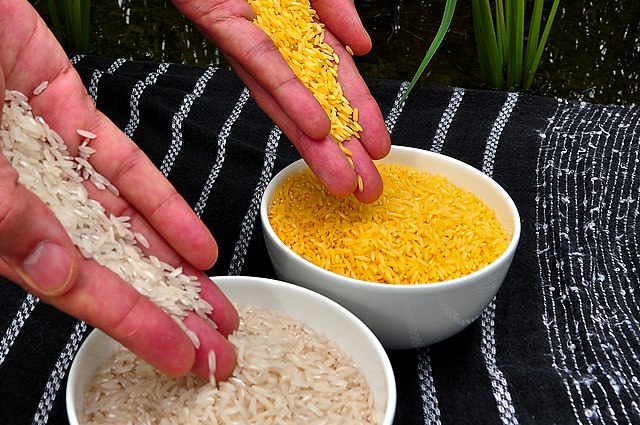Commercial cultivation of “golden rice” in the Philippines has ended after a court revoked a 2021 government permit over biodiversity concerns.
The visually colorful bio-engineered strain is rich in proVitamin A building compounds unlike organic white palay rice.
The court of Appeal had first ended the commercial permit on April 17 in favor of small-scale rice growers and environmentalists.
In 2021, the Philippines became the first nation to authorize “golden rice” cultivation to alleviate Vitamin A deficiency in children.
In 2022, however, small-scale organic rice farmers with the support of environmental bodies rallied against its introduction. They cited the variety’s genetically modified (GMO) effect on human health and the loss of plant biodiversity for their opposition.
The ruling therefore gives the anti-GMO campaigners an edge over “golden rice” backers.
One such winner is Greenpeace South-East Asia, which called the verdict a “monumental win” for farmers and anti-GMO campaigners.
On its part, the Humanitarian Board of “golden rice” termed the decision “alarming” as the variety could have saved lives.
Indeed, the government approved the strain as an alternative Vitamin A source for children from the bottom 40% of the country’s poorest.
Before its ban, the variety had been thriving in greenhouses, especially in Laguna Province in the scenic Luzon island.
Golden Rice
As growers in Los Banos in Laguna lose their cultivation rights, here is a profile of this new strain.
Golden rice is a bio-engineered variety of common rice (Oryza sativa) with beta-carotene in the edible grain. Though some plants have this compound, it is usually in their non-edible parts, hence the importance of this rice.
According to the Philippines-based International Rice Research Institute (IRRI), common rice actually lacks beta-carotene.
“Golden rice” research began in the 1980s through the Rockefeller Foundation, the University of Freiburg and the Swiss Federal Institute of Technology. Thereafter, research continued for 8 straight years in the 1990s, culminating in a breakthrough new grain.
In the early 2000s, rice-dependent nations including the Philippines, Bangladesh and Indonesia received donations of the new strain’s copy.
The Philippines approved farming of the variety in 2021 while Bangladesh is still planning endorsement at an unspecified date.
Ultimately, as the “golden rice” debate cools in the Philippines, the country continues to meet rice demand by other means. To know how this is happening, below are some statistics on local rice production and consumption.
Philippines Rice Statistics
In Quarter 1, 2024, the Philippines produced 5.23 million tonnes of palay rice, 5% above Q1, 2023’s 4.98 million tonnes. However, this value is not enough to meet domestic demand. With the 10th highest rice per capita in the world of 190 kg in 2021, the Philippines usually supplements local production with imports. The U.S. Department of Agriculture (USDA)’s forecast 2023/24 rice imports by the Philippines at 3.8 million tonnes, the world’s highest.
What is the rank of the Philippines in global rice production?
In terms of production, the Philippines emerged the 8th biggest rice-producing nation in 2021 at 19.96 million tonnes. Its continental and island neighbors Myanmar, Thailand, Vietnam, Indonesia, Bangladesh, India and China, on the other hand, topped world production in ascending order.
What is the most popular rice variety in the Philippines?
In domestic rice diversity, the Philippines boasts four home-bred rice cultivars, which double as the most popular in the country and include the Philippine Rice Research Institute’s NSIC Rc 216, Rc 300 and Rc 160, alongside IRRI’s Rc 222.
